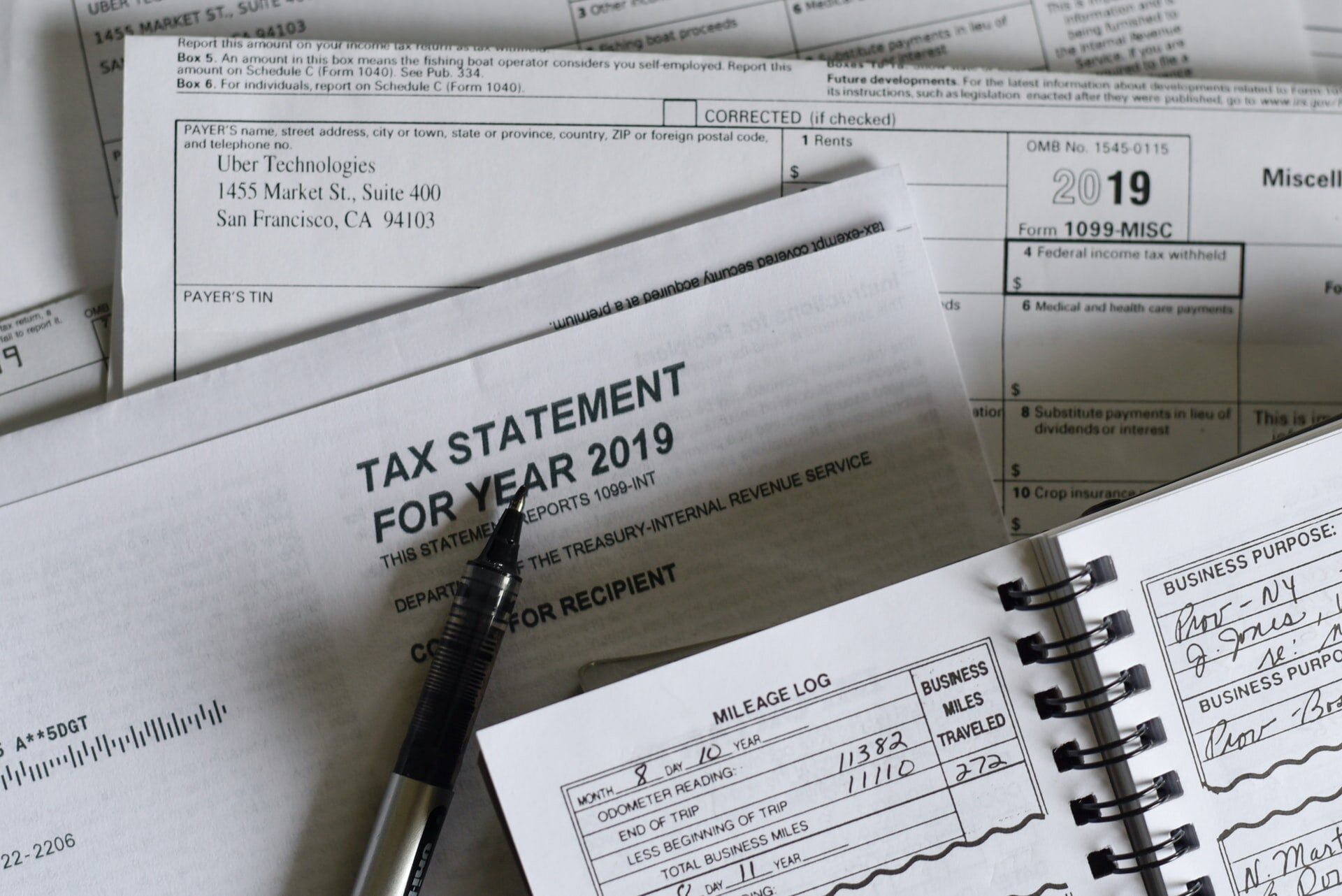

Finance
How To Respond To IRS Cp2000
Published: November 1, 2023
Learn how to effectively respond to an IRS CP2000 notice in the field of finance. Take control of your taxes and resolve any discrepancies with expert guidance.
(Many of the links in this article redirect to a specific reviewed product. Your purchase of these products through affiliate links helps to generate commission for LiveWell, at no extra cost. Learn more)
Table of Contents
Introduction
Receiving a notice from the Internal Revenue Service (IRS) can be intimidating, especially if it involves further examination or potential discrepancies in your tax returns. One such notice is the IRS Cp2000 notice, which is sent when the income and/or payment information reported to the IRS does not match the information reported on your tax return.
While receiving an IRS Cp2000 notice may cause concern, it is important to approach it calmly and constructively. This notice provides you with an opportunity to resolve any discrepancies and ensure that your tax obligations are accurately reflected.
In this article, we will guide you on how to effectively respond to an IRS Cp2000 notice. We will address the necessary steps to take, provide tips on writing a response letter, and discuss the importance of supporting documentation. Additionally, we will explore options for seeking professional assistance in navigating the process.
Keep in mind that this article provides general guidance, and it is always advisable to consult with a tax professional or a licensed accountant who can provide personalized advice based on your specific situation.
Understanding the IRS Cp2000 Notice
Before responding to an IRS Cp2000 notice, it is crucial to understand its purpose and implications. The Cp2000 notice is sent by the IRS when there is a discrepancy between the income, payments, or credits reported on your tax return and the information the IRS has received from employers, financial institutions, or other sources.
The notice will outline the specific discrepancies found by the IRS and explain any adjustments proposed to your tax liability. It includes a detailed explanation of the items in question, as well as suggested changes to your tax return, which may result in additional taxes owed or refunds due.
It is important to carefully review the Cp2000 notice and comparing it to your original tax return. Common discrepancies that the IRS may identify include unreported income, omitted deductions or credits, or incorrect filing statuses.
It is essential to differentiate the Cp2000 notice from an audit notice. The Cp2000 notice is not an audit but rather an automated assessment based on the information reported to the IRS. However, if you disagree with the proposed changes, you will need to respond to the notice, provide supporting documentation, and explain your position.
Keep in mind that the IRS allows you a specific time frame to respond to the Cp2000 notice. Typically, you will have 30 days from the date of the notice to address the discrepancies and provide a response. Failing to respond within the given timeframe may result in the IRS assessing the proposed changes, leading to additional tax liabilities.
Understanding the contents of the Cp2000 notice and the timeline for response will help you navigate the process effectively. In the next section, we will discuss the steps to take when responding to the IRS Cp2000 notice.
Gather All Necessary Documents
When responding to an IRS Cp2000 notice, it is crucial to gather all the necessary documents and information to support your position. These documents will help you address the discrepancies identified by the IRS and provide evidence to substantiate your claims.
Here are some essential documents you should gather:
- Cp2000 notice: Keep the original Cp2000 notice handy, as it contains important details, such as the tax year in question, the specific discrepancies identified, and proposed changes to your tax liability.
- Your tax return: Retrieve a copy of the tax return you filed for the corresponding tax year. This will help you compare the information you reported to what the IRS has on record.
- Income statements: Collect any income statements, such as W-2s, 1099s, or other forms, that relate to the discrepancies identified. These documents will help you verify the accuracy of the income reported on your tax return.
- Expense receipts: Gather receipts, invoices, or other forms of documentation for any deductions or credits in question. This includes expenses related to self-employment, business expenses, educational expenses, and other eligible deductions.
- Bank statements: Obtain copies of relevant bank statements to validate any claimed deductions or expenses. This includes transactions related to business expenses, charitable contributions, or medical expenses.
- Supporting documents: If you have additional supporting documents that were not included on your original tax return, gather those as well. Examples include records of charitable contributions, medical expenses, mortgage interest, or any other deductions you claimed.
By gathering all these documents, you will be better equipped to address the discrepancies outlined in the Cp2000 notice. Having accurate and thorough documentation will strengthen your response and improve your chances of resolving the issue satisfactorily.
In the next section, we will discuss how to effectively review and assess the discrepancies identified by the IRS.
Review the Discrepancies
Once you have gathered all the necessary documents, it’s time to review and assess the discrepancies identified by the IRS in the Cp2000 notice. Taking the time to thoroughly understand the discrepancies will help you formulate a strong response that addresses each issue effectively.
Here are some steps to follow when reviewing the discrepancies:
- Compare with your tax return: Carefully compare the information reported on your tax return with the proposed changes outlined in the Cp2000 notice. Pay attention to income, deductions, credits, and other relevant details. Note any discrepancies and areas where the IRS’s information differs from what you reported.
- Analyze supporting documents: Examine the supporting documents you gathered, such as income statements, expense receipts, and bank statements. Verify if the information on those documents aligns with what you reported on your tax return. Look for any discrepancies that might have caused the IRS to issue the Cp2000 notice.
- Understand the IRS calculations: Take the time to understand how the IRS arrived at the proposed changes in your tax liability. Review the calculations provided in the Cp2000 notice and double-check their accuracy. If you find any errors or miscalculations, make a note to address them in your response.
- Consider tax laws and regulations: Familiarize yourself with relevant tax laws and regulations that apply to the discrepancies identified. This will help you determine if you properly interpreted and applied the rules when filing your tax return. If needed, consult tax resources or seek professional advice to ensure a proper understanding of the laws that pertain to your situation.
- Identify any mistakes or omissions: It’s possible that the discrepancies are a result of mistakes or omissions on your part. If you identify any errors, acknowledge them and provide the corrected information in your response. Taking responsibility and providing accurate information will help resolve the issue more efficiently.
Reviewing the discrepancies thoroughly will allow you to have a clear understanding of the issues at hand. This knowledge will enable you to craft a strong and persuasive response to the IRS Cp2000 notice. In the next section, we will discuss how to effectively respond to the notice in writing.
Responding to the IRS Cp2000 Notice
When responding to an IRS Cp2000 notice, it is important to approach it in a timely and organized manner. Your response should be clear, concise, and address each discrepancy identified in the notice. Additionally, it should include supporting documentation and a well-crafted explanation to support your position.
Here are some steps to take when responding to the IRS Cp2000 notice:
- Read the notice carefully: Thoroughly read and understand the Cp2000 notice, including the proposed changes and any deadlines for response. Ensure that you are clear on what the IRS is requesting and the specific discrepancies you need to address.
- Compose a response letter: Craft a formal response letter to the IRS that concisely addresses each discrepancy. Use a professional tone and structure your letter in paragraphs or bullet points for clarity. Include your name, address, and taxpayer identification number (TIN) at the top of the letter for identification purposes.
- Address each discrepancy: In your response letter, go through each discrepancy outlined in the Cp2000 notice and provide a clear explanation or correction. Be specific and provide any relevant details or calculations to support your position. Refer to the supporting documentation you gathered and attach copies to your letter.
- Include additional explanations: If there are any extenuating circumstances or unique factors that affected the discrepancies, make sure to mention them in your response. Provide a detailed explanation of why the differences occurred and how they should be accurately reflected on your tax return.
- Be polite and professional: Maintain a respectful and professional tone in your response. Avoid being confrontational or defensive. Remember that the IRS agent reviewing your case is more likely to respond positively if you approach the matter with professionalism and a willingness to resolve any discrepancies.
- Maintain documentation: Make copies of your response letter and all supporting documentation for your records. Keep track of the date when you sent the response and the method of delivery (e.g., certified mail) for future reference.
By following these steps, you can submit a well-structured and informative response to the IRS Cp2000 notice. In the next section, we will discuss the importance of providing supporting documentation along with your response.
Writing the Response Letter
When responding to an IRS Cp2000 notice, writing a well-crafted and organized response letter is crucial. Your response letter should be clear, concise, and effectively address each discrepancy identified by the IRS. Here are some tips to help you write an effective response letter:
- Use a professional tone: Maintain a respectful and polite tone throughout your letter. Remember that you are engaging in a formal communication with the IRS, so it’s important to present yourself professionally.
- Address the notice: Begin the letter by clearly addressing the Cp2000 notice. Mention the date of the notice, the tax year in question, and any other identifying details provided in the notice.
- Identify yourself: Include your name, address, and taxpayer identification number (TIN) at the top of the letter to ensure proper identification and reference to your case.
- Refer to the discrepancies: Address each discrepancy outlined in the Cp2000 notice separately in your letter. Use clear and specific language to explain your position and provide any necessary corrections or explanations.
- Support with evidence: Attach copies of all relevant supporting documentation to your response letter. Reference these documents in your letter to back up your claims and demonstrate the accuracy of your tax return.
- Provide calculations: If the discrepancies involve calculations, provide detailed calculations in your response letter. Show step-by-step calculations to substantiate your position and demonstrate that your reported figures are accurate.
- Acknowledge mistakes or omissions: If you made any errors or omissions on your tax return, acknowledge them in your response letter. Clearly state the corrections or additional information you are providing to rectify the discrepancies.
- Be thorough but concise: While it’s important to provide comprehensive information, avoid unnecessary lengthy explanations. Be clear and concise in your writing to ensure the IRS can easily understand your position and the actions you are taking to address the discrepancies.
- Proofread your letter: Before submitting your response letter, thoroughly proofread it for any grammatical or spelling errors. A well-written and error-free letter shows professionalism and attention to detail.
By following these tips, you can write a well-structured and persuasive response letter to the IRS Cp2000 notice. In the next section, we will discuss the importance of providing supporting documentation to strengthen your response.
Providing Supporting Documentation
When responding to an IRS Cp2000 notice, providing accurate and relevant supporting documentation is crucial. These documents serve as evidence to support your position and address the discrepancies identified by the IRS. Here are some important points to keep in mind when submitting supporting documentation:
- Include all relevant documents: Ensure that you include all necessary documents that directly relate to the discrepancies outlined in the Cp2000 notice. This may include income statements, expense receipts, bank statements, or any other documentation that supports your reported figures.
- Organize your documents: Arrange your supporting documentation in a clear and organized manner. Use tabs or labels to separate different types of documents, making it easier for the IRS to review and verify the information.
- Provide copies, not original documents: It is important to provide copies of your supporting documentation, rather than original documents. Keep the originals for your records and only submit duplicates to the IRS.
- Label your documents: Clearly label each document with a brief description to help the IRS understand its relevance. For example, label a bank statement as “Bank Statement – January 2021” or a receipt as “Receipt for Business Expenses – XYZ Inc.”
- Reference documents in your response letter: In your response letter, mention the specific supporting documents you are providing as evidence. Refer to them by name or label and describe how they relate to the discrepancies identified.
- Highlight key information: When submitting supporting documentation, highlight or annotate key information that directly supports your position. This can include specific figures, dates, or any other relevant details that demonstrate the accuracy and validity of your reported information.
- Organize chronologically: If you are providing multiple documents spanning a period of time, organize them chronologically. This will make it easier for the IRS to follow the progression of events and understand how the documents support your case.
- Keep copies for your records: Make copies of all supporting documents and keep them in a secure place for your own records. This will ensure that you have backup documentation in case you need to refer to them in the future.
By providing comprehensive and well-organized supporting documentation, you strengthen your response to the IRS Cp2000 notice. These documents serve as evidence of your reported figures and help to resolve any discrepancies in a timely and accurate manner. In the next section, we will discuss the potential benefits of seeking professional assistance when responding to an IRS Cp2000 notice.
Seeking Professional Assistance
Responding to an IRS Cp2000 notice can be complex, and there are instances where seeking professional assistance can be beneficial. Tax professionals, such as certified public accountants (CPAs) or enrolled agents, can provide expertise and guidance throughout the process. Here are some reasons why you might consider seeking professional assistance:
- Expert knowledge and experience: Tax professionals have a deep understanding of tax laws and regulations. They can provide valuable insights and advice tailored to your specific situation, ensuring that you address the discrepancies efficiently and accurately.
- Personalized guidance: Each situation is unique, and a tax professional can provide personalized guidance based on your specific circumstances. They can analyze your financial records, review your tax return, and help you develop a well-crafted response that addresses the discrepancies effectively.
- Negotiation and representation: If the discrepancies identified by the IRS require negotiation or further representation, a tax professional can act as your advocate. They can communicate with the IRS on your behalf, handle any correspondence, and help secure a satisfactory resolution.
- Minimization of errors: Mistakes in responding to the IRS Cp2000 notice can lead to further complications. Tax professionals can help minimize errors by ensuring accurate calculations, providing proper documentation, and avoiding common pitfalls.
- Ease and convenience: Dealing with the IRS can be time-consuming and stressful. By hiring a tax professional, you can alleviate some of the burden and focus on other priorities while they handle the intricacies of your response.
- Long-term tax planning: A tax professional can provide valuable advice for future tax planning. They can help you understand how to avoid discrepancies and ensure accurate reporting in the long run, minimizing the chances of receiving future notices from the IRS.
While seeking professional assistance is highly recommended in many cases, it’s important to choose a reputable and qualified tax professional. Consider factors such as their credentials, experience, and client reviews when making your selection.
Remember, however, that seeking professional assistance is optional. You can still respond to the IRS Cp2000 notice on your own if you feel confident in doing so. In the next section, we will discuss the final steps of finalizing and sending your response.
Finalizing and Sending the Response
Once you have crafted your response letter, gathered the necessary supporting documentation, and considered seeking professional assistance if needed, it’s time to finalize and send your response to the IRS Cp2000 notice. Here are the final steps to ensure a smooth submission:
- Review your response: Carefully review your response letter to ensure accuracy, clarity, and completeness. Double-check that you have addressed all discrepancies identified in the Cp2000 notice and provided supporting documentation for each one.
- Proofread your response: Proofread your response letter for any grammatical or spelling errors. A well-written and error-free document demonstrates your attention to detail and professionalism.
- Make copies: Make copies of your response letter and all supporting documentation. Keep these copies for your own records in case you need to refer to them in the future.
- Organize your submission: Arrange your response letter and supporting documentation in a neat and organized manner. Use paperclips, folders, or envelopes to keep everything together and easily accessible for submission.
- Sending the response: Send your response to the IRS using a secure and traceable method, such as certified mail with return receipt requested. This will provide proof of delivery and ensure that your response reaches the intended recipient.
- Keep a record: Keep a record of the date you sent your response and the method of delivery. This information will be useful for tracking purposes or if you need to follow up with the IRS in the future.
- Follow up: After submitting your response, it is important to keep track of any correspondence from the IRS. Be prepared to provide any additional information or address any further inquiries they may have.
- Be patient: It may take time for the IRS to review and process your response. Be patient and allow them sufficient time to complete their assessment and provide a resolution to your case.
By following these final steps, you can ensure that your response to the IRS Cp2000 notice is complete, well-organized, and properly submitted. Stay proactive and responsive throughout the process to facilitate a timely resolution. In the next section, we will conclude this article.
Conclusion
Responding to an IRS Cp2000 notice can be an intimidating and complex process, but with the right approach and preparation, you can effectively address the discrepancies and resolve the matter with the IRS. Remember the following key points:
First and foremost, take the time to understand the Cp2000 notice and the discrepancies outlined by the IRS. Gather all necessary documents, review the discrepancies, and ensure you have a clear understanding of the proposed changes.
Craft a well-written response letter that addresses each discrepancy, provides explanations, and includes relevant supporting documentation. Organize your response in a professional and concise manner, and make sure to reference your supporting documentation in the letter.
Consider seeking professional assistance if needed. Tax professionals can offer expertise, personalized guidance, and negotiation representation. They can help minimize errors and alleviate the stress of dealing with the IRS.
Once your response is finalized, send it to the IRS using a secure and traceable method. Keep copies of your response and supporting documentation for your own records. Maintain a record of the date you sent the response and any follow-up correspondence.
Be patient throughout the process, as it may take time for the IRS to review and respond to your submission. Stay proactive and responsive in case they request additional information or have further inquiries.
Remember, this article provides general guidance, and it’s always advisable to consult with a tax professional or licensed accountant for personalized advice based on your specific situation. By approaching the IRS Cp2000 notice with knowledge, organization, and a proactive mindset, you can effectively address the discrepancies and ensure accurate tax reporting.
By following these steps and taking the necessary precautions, you can navigate the process confidently and increase your chances of achieving a satisfactory resolution with the IRS.














